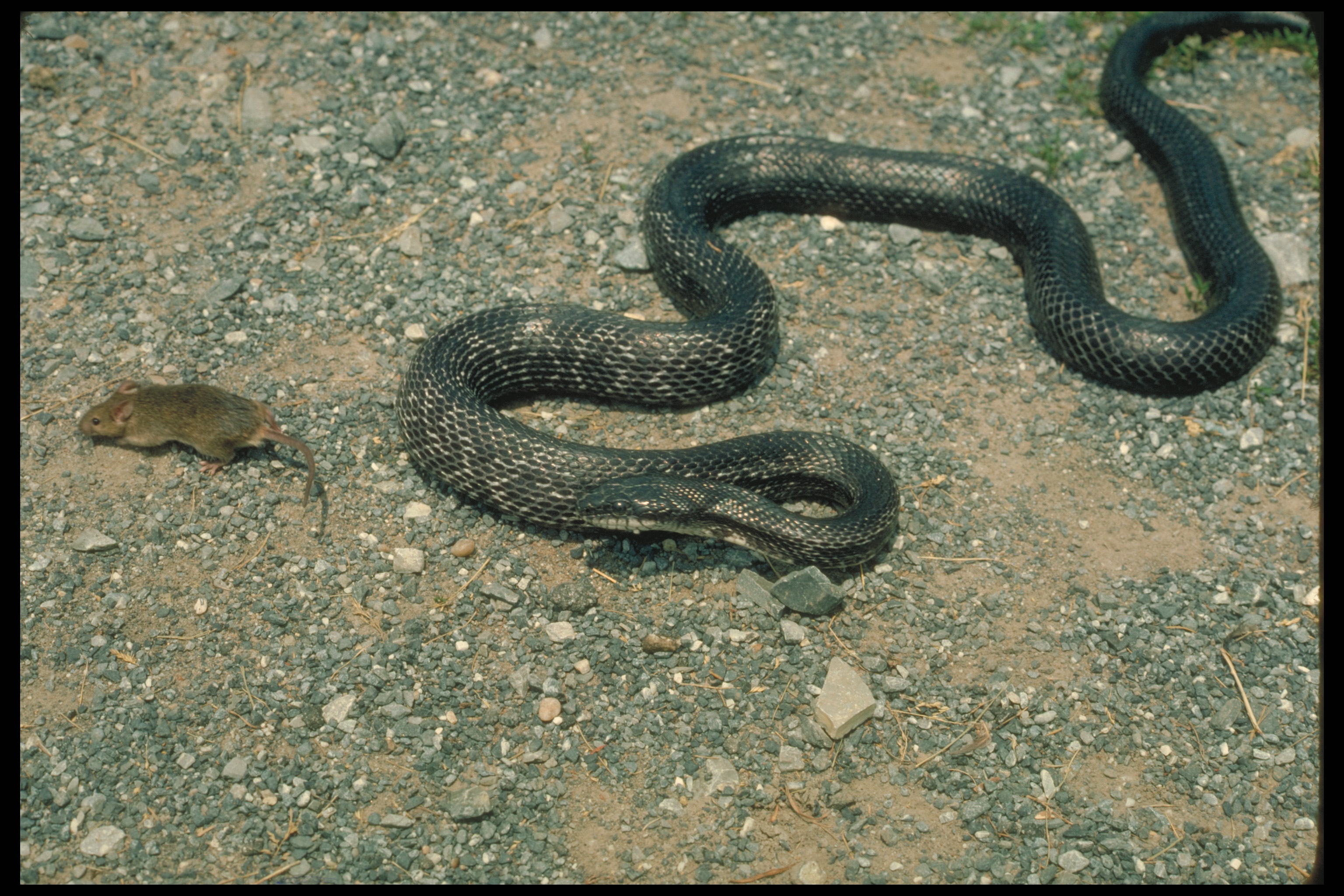
Snakes
Apart from a minority of species, most snakes are very easy to feed in captivity.
One factor that holds back some would-be snake keepers, or those they live with, is the subject of food.
Feeding live insects to my tarantulas is seen as barbaric by those I know. Watching my preying mantids tucking into a still-wriggling locust makes many people cringe.
Even the insects themselves make many people's stomach's turn and whenever friends see a box arrive in the post labelled "Danger - Live Insects" they avoid it like the plague!

But apart from a few select species such as the rough green snakes and some garter snakes most commonly-kept snakes are perfectly happy to eat dead prey.
For people like you and me this makes life very easy.
A huge range of dead snake food can be bought in reptile stores or from mail order companies and kept safely and hygienically in the freezer at home allowing you to htaw out what your snake needs on a regular basis and feed it.
What's more, whilst you shouldn't make a habit of it, snakes can safely go a week or two without food, so if you run our unexpectedly you can order more without the worry that your precious snake will starve before it turns up.
You should take care to thoroughly thaw the food you remove from the freezer before feeding it to your snake(s) or ice crystals may still remain which can cause real problems for your snake.
I'm a busy person, and even I don't like the thought of an unthawed dead mouse sitting around in my kitchen so I have adopted a simple process.
I take the snake food I need and place it in a plastic bag before tying the top.
I tend to use the small, clear plastic bags available from supermarkets to put sandwiches and other food in to keep them fresh.
I then drop this bag into a container - such as an old icecream tub - of hot (not boiling) water.
Within 30-60 minutes the food is not only unfrozen but is actually warm from the water.
I then untie the bag and feed the snakes straight away - while the food is still warm.
This means I don't waste hours waiting for the food to defrost, and the fact that it is warm when I feed it makes it all the more attractive to the snakes too.
But lets have a closer look at some other snake food topics:
Frozen Snake Food
As already discussed most snake food is bought frozen - and once defrosted should not be refrozen for the safety of your snake.
That means that if you have some distance to travel - such as if you buy your frozen snake food from a pet store and have a long drive home - you should really either use a heat-excluding freezer bag as available from home stores or some supermarkets and/or buy in bulk.
A large bag of frozen snake food will take much longer to defrost than just one or two mice on their own.
After all, you know how long it takes to defrost a huge turkey at Thanksgiving, right?!
Try doing that an hour before you want to start cooking and you'll be sorely disappointed :-)
Depending on where you decide to buy you'll have a widely different selection of frozen food available to you, and at very different prices.
Sure, you could use a pet store , but my own preferred method is to purchase snake food direct from a specialist supplier that has the range and lack of overheads to really offer what you need at an affordable price.
For most of the common species described on this site, frozen mice of various sizes will be the staple diet - both easily sourced and perfectly nutritious.
However there are a range of other frozen snake food I have seen here in the UK - from day-old chicks to lizards, gerbils, hamsters, frozen rats , guinea pigs and rabbits.
Unless your snake is particularly large, or is refusing to eat though, I suggest you stay mainly to frozen mice.
Some specialist frozen snake foods are also available - such as for garter snakes - and look less "real" and more "processed" such as small cubes or suasages of meat.
Unless a breeder specifically recommends it, it is best to stick to those staples of the hobby rather than experiment with pieces of raw steak, burger or pork.
Other meats can be quite fatty, and do not contain the correct balances of nutrients for a species used to eating whole animals - bones, skin and all.
Snake Food - Frozen Rats
Forzen rats are generally only suitable food for larger species of snakes, though rats pups can be bought as an alternative to small frozen mice - as fed to large juvenile corn snakes, king snakes and the like.
Only the Indigo snake, bull snakes and a few of the larger king snake species are likely to grow large enough to really appreciate the larger rats though those that keep large pythons and boas will find them essential fodder.
Feeding numerous dead mice to a snake as large as a burmese python (for example) will soon get very expensive and time consuming.